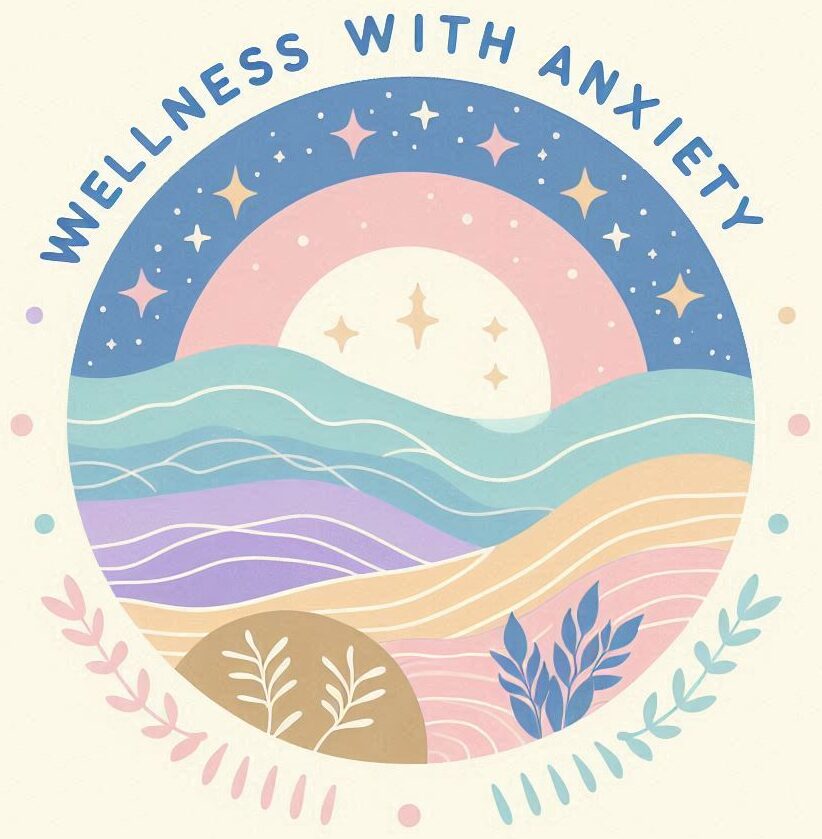 Anxiety and chronic illness often seem like separate paths, but they’re more intertwined than you might think. Anxiety disorders are like that persistent buzzing sound in the background that just won’t quit. Chronic illnesses—conditions like diabetes, heart disease, or arthritis—are no better. They’re the unwelcome guests that stick around far too long. But the trick is realizing they feed off each other.
Anxiety and chronic illness often seem like separate paths, but they’re more intertwined than you might think. Anxiety disorders are like that persistent buzzing sound in the background that just won’t quit. Chronic illnesses—conditions like diabetes, heart disease, or arthritis—are no better. They’re the unwelcome guests that stick around far too long. But the trick is realizing they feed off each other.
Studies have highlighted that when you’re living with a chronic disease, you’re way more likely to also deal with anxiety. Consider anxiety as an unruly partner, thriving on the medical chaos chronic illness brings. For instance, about a third of people with chronic illness suffer from anxiety, and that’s no small number!
Acknowledging this duo early on means getting a jump on better ways to cope and manage both conditions more effectively. You gotta understand that when confusion strikes over whether it’s just pain or anxiety in the driver’s seat, it’s time to seek clarity.
The body and mind have this wild connection. An anxious mind can make pain feel sharper, make illnesses seem worse. Recognizing the patterns is key because that’s where the power to manage them lies. Life’s way too short to let anxiety and chronic illness dictate the terms and take control.
Recognizing this connection early? Total game-changer. It could lead to more effective, well-rounded treatment plans. Consider it like unraveling a mystery—knowing how anxiety adds its own drama can pave the way for peace and better health down the line.
The Biological and Psychological Pathways Linking Anxiety to Chronic Pain
 Imagine your nervous system as this complex alarm system. Anxiety hits the switch, sending signals all over the place, and sometimes, those signals end up amplifying the droning discomfort of chronic pain. It’s like turning up the volume on both physical and emotional distress.
Imagine your nervous system as this complex alarm system. Anxiety hits the switch, sending signals all over the place, and sometimes, those signals end up amplifying the droning discomfort of chronic pain. It’s like turning up the volume on both physical and emotional distress.
Anxiety’s Affect on Hormones & Pain Perception
Here’s the scoop: anxiety might crank up stress hormones like cortisol and adrenaline, which in turn, mess with your body’s natural pain-relief processes. Instead of calming down, your body’s on high alert, and that makes pain tougher to manage.
How Anxiety Alters the Process of Pain
Scientific research backs this up, pointing out that when anxiety is in the mix, the perception of pain isn’t just in your head—it actually alters the way pain is processed in your body. Suddenly, the aches get louder, and symptoms seem bigger than reality.
The Anxiety-Pain Feedback Loop
There’s something called a feedback loop here. Anxiety and pain like to bounce off each other, making each seem more relentless and unmanageable. It’s like a vicious circle: anxiety heightens pain perception, and persistent pain spikes anxiety levels.
How to Break the Cycle
One way around this is understanding and breaking down those pathways. Finding ways to slow that racing heart and calm the mind can change how one experiences pain. Techniques like biofeedback or relaxation exercises aren’t just hippy-dippy theories—they’re proven strategies that can actually create a buffer between anxiety and pain.
Seeking Therapeutic Options
Navigating this mind-body link means leveraging expertise from medical pros who can offer integrated treatments. Seeking therapeutic options that address anxious thoughts while managing pain can make a world of difference. Knowledge, after all, can be the key to loosening the grip on chronic pain.
Diseases Where Anxiety Plays a Significant Role
 Anxiety doesn’t just stand in the corner when chronic diseases are at play; it actively participates, sometimes even holding the spotlight. Some illnesses like Irritable Bowel Syndrome (IBS), fibromyalgia, and heart diseases seem to latch onto anxiety, creating an intriguing yet challenging cocktail of symptoms.
Anxiety doesn’t just stand in the corner when chronic diseases are at play; it actively participates, sometimes even holding the spotlight. Some illnesses like Irritable Bowel Syndrome (IBS), fibromyalgia, and heart diseases seem to latch onto anxiety, creating an intriguing yet challenging cocktail of symptoms.
Anxiety & IBS
IBS, for example, frequently rallies anxiety as an accomplice. It’s not just cramps and discomfort—those nerves are working overtime, making everything feel harsher. Anxiety can actually worsen digestive symptoms, establishing a particularly pesky cycle.
Anxiety & Fibromyalgia
Another one is fibromyalgia, a condition known for widespread pain. Here, anxiety often amplifies symptom intensity. Imagine trying to silence a radio, yet everything you do only cranks it up more instead. That’s what anxiety can do to fibromyalgia—the pain feels more intense as anxiety levels rise.
Anxiety & Heart Diseases
The heart also doesn’t escape this duo’s antics. Anxiety can lead to hypertension or irregular heart rhythms, where every beat feels louder and more urgent than before. It’s like anxiety acts as an unwanted DJ, mixing signals that confuse and frighten.
Using the Dual Approach Treatment
Managing these conditions involves taking a dual approach. It’s not just about all the symptomatic treatment. Addressing anxiety directly can sometimes relieve physical symptoms, highlighting how interconnected the mind-body highway truly is.
Psychological Therapies
Doctors are finding that adding psychological therapies alongside traditional treatments can offer a fuller, more effective approach to disease management. It’s about appreciating mental health as a pillar of chronic disease treatment plans, not just an afterthought.
Distinguishing Between Anxiety and Physical Illness Symptoms
 Sometimes it feels like your mind’s playing tricks, leaving you in this gray area where you’re stuck wondering if it’s just anxiety knocking or an actual illness setting up shop. Symptoms like sickness or even exhaustion can easily blur together with anxiety, adding layers of confusion to what’s real and what’s simply stressed-out jitters.
Sometimes it feels like your mind’s playing tricks, leaving you in this gray area where you’re stuck wondering if it’s just anxiety knocking or an actual illness setting up shop. Symptoms like sickness or even exhaustion can easily blur together with anxiety, adding layers of confusion to what’s real and what’s simply stressed-out jitters.
The Mimic
Many anxiety symptoms mimic those of physical illnesses—headaches, rapid heartbeat, or even nausea. Picture an internal alarm that’s sensitive to every little thing; anxiety can make the body react to non-existent threats, ramping up symptoms that look suspiciously like a physical illness.
Health Anxiety
Enter ‘health anxiety,’ where there’s a constant concern—or even obsession—over potential health issues. It can make you hyper-aware of any bodily changes, often making everyday aches seem like a harbinger of doom.
Normal vs. Anxiety: Noticing the Patterns
Clearing the fog requires a closer look and sometimes, a bit of professional help. Understanding your baseline is key—what’s your normal and what’s anxiety talking? Start noticing patterns in symptoms, their triggers, and any common threads.
Seek a Professional for Guidance
If stress and worry are running the show, it might be time to tag in a healthcare pro. Professionals can help in charting the path through these murky waters, providing the right tools or treatments to separate real symptoms from anxiety’s smokescreen.
Sometimes, a big part of this involves talking with mental health experts. They can provide a clearer picture of whether anxiety is just creating shadows or if there’s a genuine physical concern brewing. Developing strategies to manage stress can help tone down the health anxiety, returning focus from what’s feared to what actually is.
Innovative Therapeutic Approaches to Addressing Dual Diagnoses
 Tackling the complex tango of anxiety and chronic illness calls for an inventive approach. It’s not just about tackling each issue solo but finding how they overlap and addressing that intersection head-on. A multi-disciplinary team of healthcare professionals is your best bet, combining skill sets to give you an edge.
Tackling the complex tango of anxiety and chronic illness calls for an inventive approach. It’s not just about tackling each issue solo but finding how they overlap and addressing that intersection head-on. A multi-disciplinary team of healthcare professionals is your best bet, combining skill sets to give you an edge.
Cognitive Behavioral Therapy
Cognitive-behavioral therapy (CBT) can be a lifesaver here. By working to reframe negative thoughts, CBT chips away at the anxiety that’s fueling chronic pain. When you change the thought patterns, the body often follows suit, reducing pain perception and overall stress effects. It’s like recalibrating the mind to send fresher, more relaxing signals.
Consider Medication
Sometimes meds play a crucial role too. They might target anxiety specifically, or help manage the chronic illness more effectively. Finding the right mix may take time, but when anxiety’s grip loosens, the benefits ripple through both mind and body, leading to a more balanced life.
Lifestyle Changes
Don’t underestimate the power of lifestyle changes. Exercise, even gentle movement like yoga or a brisk walk, releases endorphins which can counterbalance mood dips. Eating well, prioritizing sleep, and maybe giving mindfulness practices a chance could bring surprising relief.
The Importance of Mindfulness
Mindfulness and relaxation techniques deserve a special mention. These aren’t just buzzwords. Techniques like meditation or deep-breathing exercises can help re-center your focus and pull you back from the brink of anxiety. Creating that peaceful space can sometimes lessen the grip of anxiety on your mind and body, allowing for a clearer view of health challenges.
Understanding the connection between anxiety and chronic illness is a game-changer for anyone facing both challenges. By recognizing how these two intertwine, we can take proactive steps to manage symptoms and improve overall well-being. Whether it’s through therapy, lifestyle changes, or medical interventions, tackling the mind-body link head-on opens the door to a more balanced, fulfilling life. Remember, addressing anxiety isn’t just about calming the mind—it’s about empowering the body to heal and thrive alongside it.
